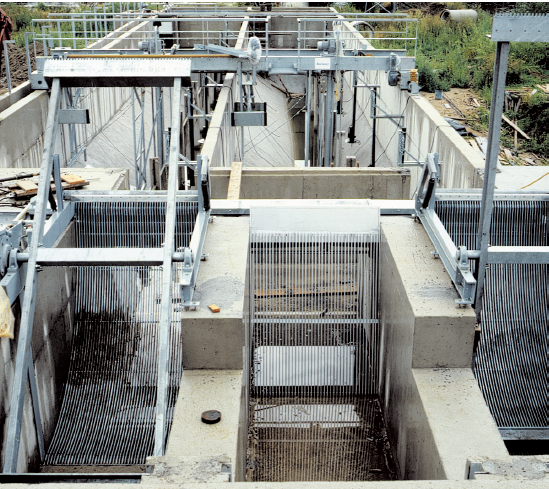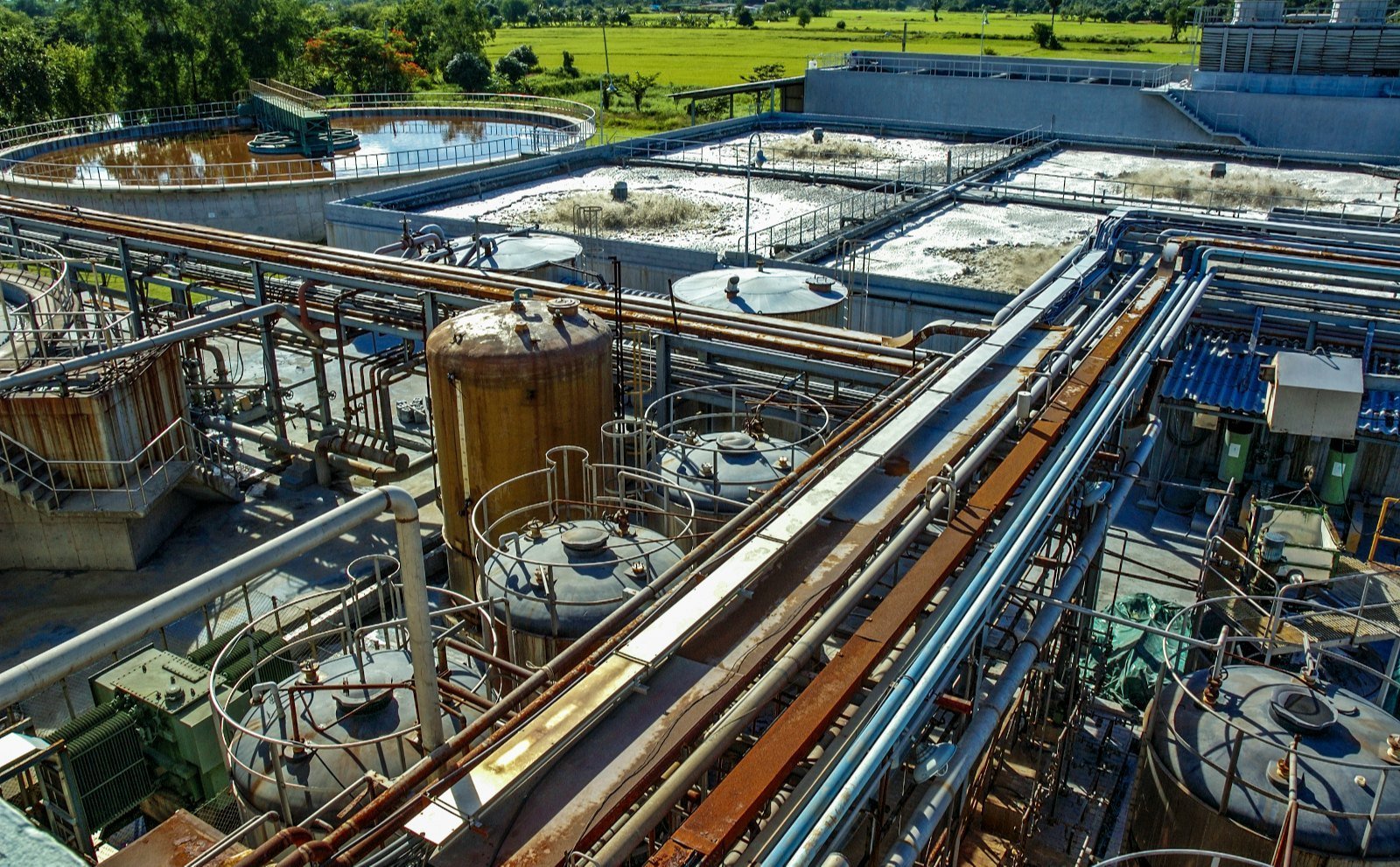Bar Screens in Wastewater Treatment: Essentials for Efficient Solids Removal

Bar screens are essential components in wastewater treatment plants, serving as the first line of defense in the filtration and treatment process. They are installed at the entrance of the treatment facility to physically remove large objects such as sticks, rags, and plastic materials from the wastewater stream. This preliminary step is crucial because it prevents these materials from damaging or clogging pumps and other equipment further down the treatment line.
These screens come in various shapes and sizes, designed to cater to different flow rates and types of debris. Their operation can be manual or automated, with the latter increasingly preferred for modern wastewater treatment plants due to its efficiency and reduced labor costs. Maintaining bar screens is an ongoing task that requires regular inspections to ensure they continue to function effectively and protect the downstream processes.
Key Takeaways
- Bar screens initiate the treatment process by removing large solids from wastewater.
- They vary in design to accommodate different waste profiles and site requirements.
- Regular maintenance is necessary to sustain their protective role in wastewater management.
Overview of Bar Screens
Bar screens are critical components in wastewater treatment facilities. They are primarily used to remove large solids such as rags and debris from the wastewater stream. A typical bar screen consists of parallel bars spaced at regular intervals. Wastewater flows through these bars, allowing water to pass while trapping solid materials.
Types of Bar Screens:
- Mechanically cleaned: Automated mechanisms remove the collected solids, reducing manual labor and ensuring consistency in operation.
- Manually cleaned: Require human intervention to clear the accumulated debris.
Functionality: Bar screens are the first line of defense, protecting the downstream treatment processes from damage and excessive wear caused by large objects. They help prevent clogs in pumps, pipes, and other equipment.
- Size of Openings:
- Coarse screens: Typically have openings larger than 6 mm (0.25 in).
- Fine screens: Employed to capture smaller particles and are strategically placed after coarse screens.
Maintenance of bar screens is essential for efficient operation. Accumulated materials must be promptly removed and properly disposed of to keep processing unhindered and sanitary conditions maintained. Additionally, operators of wastewater treatment plants must regularly inspect and repair bar screens to prevent failures that could lead to untreated wastewater discharges.
Bar screens play a vital role in improving the overall efficiency of wastewater treatment processes, acting as a preliminary filtration method that enables downstream systems to function at their best.
Function and Importance
Bar screens play a critical role in wastewater treatment by preventing large solids from passing further into the treatment system where they can cause damage or inefficiency.
Protection of Wastewater Infrastructure
Bar screens are essential in safeguarding the physical infrastructure of a wastewater treatment facility. By removing bulky items early in the process, bar screens:
- Prevent clogging: Ensuring pumps and pipelines remain clear of obstructions.
- Protect equipment: Guarding against wear and damage to machinery such as comminutors and pumps.
The physical removal of objects helps maintain the integrity of downstream equipment, thereby extending its operational life and reducing maintenance costs.
Improvement of Downstream Processes
In wastewater treatment, fine bar screens contribute significantly to the enhancement of subsequent stages by:
- Boosting treatment efficiency: Fine screens isolate smaller particles, which can enhance the performance of secondary treatment processes like biological reactors.
- Reducing operational problems: With less debris, there is a lower risk of issues in processes like aeration, which rely on diffusers that can be clogged by excess solids.
By performing these functions, bar screens are indispensable in promoting a smoother and more efficient wastewater treatment process, from preliminary stages to final discharge of treated water.
Types of Bar Screens
In wastewater treatment, bar screens play an essential role in the preliminary phase by removing large solid objects from the inflow. These devices, crucial for protecting pumps and downstream processes, are differentiated primarily by their mode of operation.
Manual Bar Screens
Manual bar screens require periodic human intervention for the removal of trapped debris. These screens are simple in design and often employed in smaller or less automated facilities where manual clearing is feasible. Labor intensity is a consideration as they necessitate routine cleaning to prevent blockages and maintain efficiency.
Mechanical Bar Screens
Mechanical bar screens facilitate continuous, automated debris removal. They are integral in larger and more technologically advanced wastewater treatment plants where high-volume throughput demands efficiency. Mechanical screens operate using a motor-driven mechanism that cleans the screen and deposits the waste into a designated area. They are often chosen for their ability to reduce manual labor and maintain consistent flow rates through the treatment system.
Design and Operation
In wastewater treatment plants, bar screens are pivotal for the initial phase of the filtration process. Their primary function is to remove large solids from the wastewater stream, which protects the more delicate equipment further down the treatment line from damage or clogging.
Design aspects of bar screens can vary, but they generally consist of a series of parallel bars spaced at specific intervals, typically between 15 to 50 millimeters apart. Materials used for these bars include stainless steel or other durable metals that resist corrosion and wear.
Bar screens may be categorized into different types based on their “cleaning mechanisms“:
- Manually cleaned screens require routine human intervention, making them labor-intensive.
- Mechanically cleaned screens, on the other hand, utilize automated rakes that move on tracks to clear the collected debris, enhancing efficiency.
Operation of a bar screen involves the following steps:
- Wastewater flows through the bar screen.
- Solids larger than the bar spacing are captured.
- Cleaning mechanisms remove the trapped materials.
- The collected debris is then disposed of or processed accordingly.
This process ensures that materials such as leaves, twigs, and various inorganic items, as mentioned in New York City’s Wastewater Treatment Process, don’t enter the main treatment facility. Ensuring the bar screen’s efficiency is crucial for maintaining optimal plant performance and ensuring subsequent treatment stages are effective.
Installation and Maintenance
In the context of wastewater treatment, the installation and maintenance of bar screens are crucial for efficient operation. These screens play a vital role in removing debris from wastewater streams before it reaches treatment plants.
Installation Considerations
When installing bar screens, it is essential to ensure that they are properly sized for the flow rate of the wastewater plant. A bar screen that is too small can become clogged quickly, whereas a screen that is too large may not effectively remove debris. The orientation and location of the bar screen must allow for easy access for maintenance and inspection.
- Flow Rate Calculations: Match the screen design to handle peak flow rates.
- Structural Integrity: The bar screen must be installed on a sound structural base to withstand the force of the water and debris.
- Accessibility: Position the screen to allow for routine maintenance without excessive downtime.
Maintenance Procedures
Regular maintenance of bar screens is essential to prevent malfunctions that could lead to costly repairs or plant shutdowns. Maintenance typically includes routine cleaning to remove lodged debris and inspection of the screen’s physical condition.
- Cleaning Schedule: Implement a cleaning schedule in line with the amount of debris typically encountered.
- Wear and Tear Inspection: Regular checks for signs of damage or wear, such as broken bars or corrosion, are critical.
- Lubrication: Ensure that all moving parts are properly lubricated to prevent failures.
Bar screens must be maintained according to the manufacturer’s guidelines to ensure a long service life and continuous protection against the accumulation of solids in the wastewater stream.
Challenges and Solutions
In the realm of wastewater management, bar screens play a crucial role in the initial phase of the filtration process. They face specific challenges such as handling large materials and controlling odors, for which innovative and practical solutions have been developed.
Handling Large Solids
Bar screens are the first line of defense against large solids entering wastewater treatment plants. They encounter a variety of debris ranging from leaves to plastic bottles. One challenge they must overcome is preventing these materials from clogging the screens, which can hinder the treatment process and potentially damage equipment. To address this issue, plants typically employ automated bar screens, which have mechanical rakes that regularly clean the accumulated debris, transporting it to a conveyor belt system. This solution ensures consistency and efficiency, keeping the influent wastewater free of large solids and maintaining an unobstructed flow into subsequent treatment stages.
Odor Control and Aesthetics
Onsite at wastewater treatment facilities, odor control is imperative, not only for the comfort and health of the workers but also for nearby residents. Bar screens, due to the nature of the materials they capture, can often be a source of unpleasant odors. To mitigate this, facilities have adopted encapsulation procedures and the installation of odor control systems that cover the bar screens and treat the air before it is released into the environment. Furthermore, regular maintenance and cleaning procedures are crucial for both odor management and maintaining an aesthetically acceptable appearance at the facility, ensuring the surrounding areas are not negatively impacted.
Regulatory and Safety Considerations
In the realm of wastewater treatment, bar screens are an essential first step in the screening process, removing large solids from the influent to protect downstream equipment. Regulatory and safety considerations are critical to ensure both compliance with legal standards and the protection of workers and the environment.
Regulatory Compliance:
- Permitting: Entities must obtain necessary permits from local and state agencies.
- Standards: Operations should adhere to guidelines set by the Environmental Protection Agency (EPA) and equivalent entities.
- Monitoring: Regular monitoring to ensure the efficacy and safety of the bar screens is mandated.
Worker Safety:
- Training: Workers must be properly trained in equipment handling and emergency response.
- Personal Protective Equipment (PPE): The use of gloves, goggles, and other safety equipment is mandatory when operating, inspecting, or maintaining bar screens.
- Lockout/Tagout (LOTO) Procedures: Ensuring machinery is safely shut off before maintenance is non-negotiable to prevent accidents.
Environmental Conservation:
- Disposal: Captured waste materials must be disposed of responsibly to prevent environmental contamination.
- Noise and Odor Control: Proper containment measures should be implemented to minimize odor and noise pollution.
Record-Keeping and Reporting:
- Documentation: Detailed logs of maintenance, incidents, and training records are essential.
- Incident Reporting: Any accidents or equipment failures must be promptly reported to the respective regulatory bodies.
Compliance with these safety and regulatory considerations is not only a legal requirement but also a commitment to public health and environmental stewardship.
Innovations and Technological Advancements
Recent technological advancements have significantly improved bar screen designs in wastewater treatment facilities. Innovations focus on enhancing efficiency, reducing maintenance requirements, and improving waste capture.
Automation has been a game-changer for bar screens. Modern facilities employ automated systems that can detect the amount of collected debris and activate cleaning mechanisms as needed. This reduces manual interventions and ensures continuous operations.
Advancements in materials science have also had an impact. Newer bar screens are made of corrosion-resistant materials making them more durable and less prone to damage from toxic substances in wastewater. This prolongs the lifespan of the screens and decreases the frequency of repairs.
One of the most significant innovations is fine screening technology. These systems feature smaller openings that effectively remove smaller particles, improving the downstream treatment processes. Facilities that upgrade to fine screens can enhance the overall quality of effluent:
- Improved Removal: Captures finer solids
- Lower Costs: Reduces the burden on downstream processes
- Environmental Impact: Leads to cleaner water discharge
In the context of energy efficiency, new designs offer significant reductions in power consumption. This is not only cost-effective for the facilities but also aligns with sustainability goals, playing a critical role in the modernization of wastewater treatment.
Frequently Asked Questions
What is the purpose of a bar screen in wastewater treatment procedures?
The purpose of a bar screen in wastewater treatment is to intercept and remove large solid objects and debris from the sewage. This helps prevent clogging or damage to downstream equipment.
How do mechanical bar screens operate to eliminate waste from wastewater?
Mechanical bar screens operate by using a motor-driven mechanism that moves a rake through the bars, catching and lifting debris from the wastewater for disposal.
Why are screening devices such as bar screens important in the primary treatment stage of sewage?
Screening devices like bar screens are important in the primary treatment stage because they protect pumps and other mechanical equipment from being damaged by large debris, ensuring the efficiency of the treatment process.
What variety of bar screens are commonly utilized in wastewater treatment facilities?
Most wastewater treatment facilities utilize either manually cleaned bar screens for smaller plants or mechanically cleaned bar screens for larger operations that handle higher volumes of sewage.
What are the standard dimensions for the spacing of steel bars in coarse screening equipment?
Standard dimensions for the spacing of steel bars in coarse screening equipment typically range from 15 to 50 millimeters (0.6 to 2 inches), efficiently removing bulky solids while allowing smaller particles to pass through.
How is manual cleaning performed on bar screens within wastewater treatment plants?
Manual cleaning on bar screens is performed by workers who physically remove the trapped debris using handheld tools, which is generally suitable for smaller plants with less frequent maintenance requirements.



